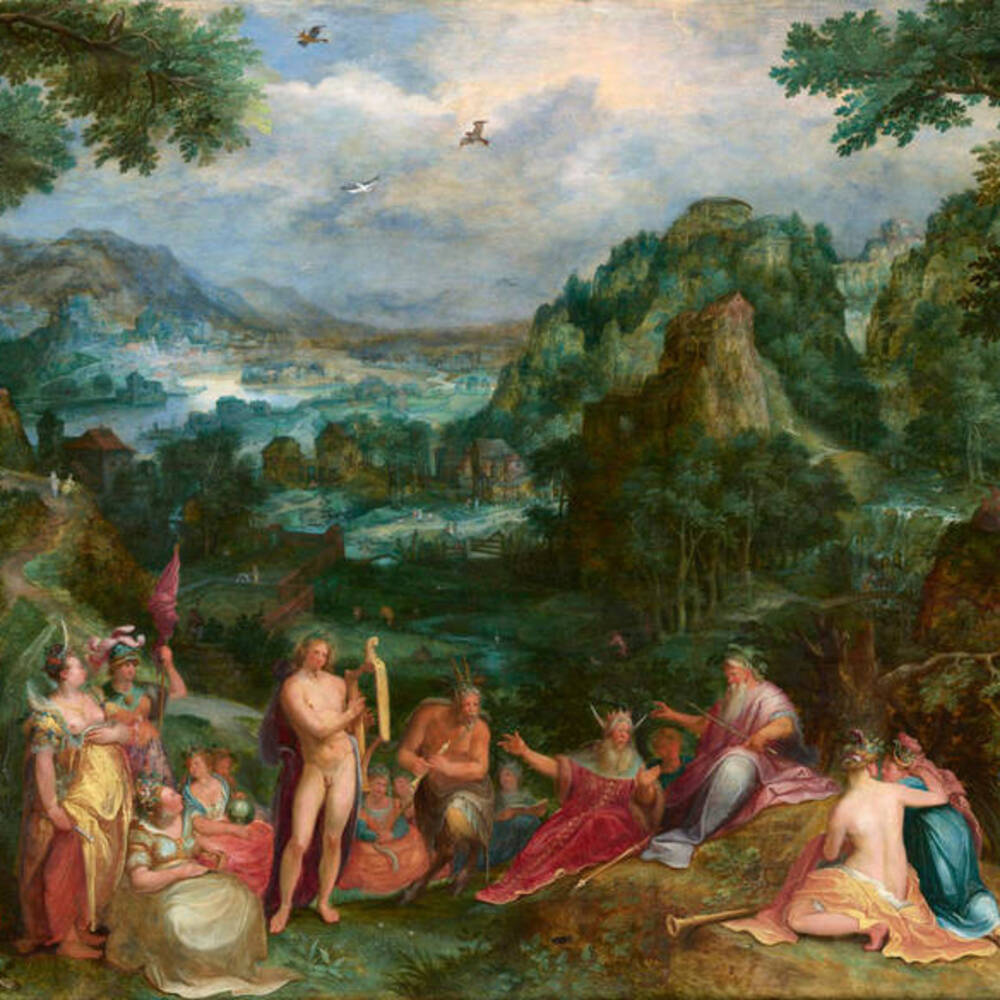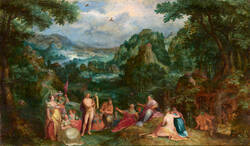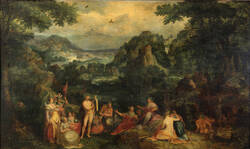In front of an imposing panoramic landscape the story of the musical contest between the Greek gods Pan and Apollo is told. As judge in the matter the aged Tmolos decided that Apollo was the winner. But King Midas criticized the verdict, claiming that the buck-legged Pan deserved the prize. Offended by this, Apollo punished him with donkey ears.
While the figure scenery was created by the art theorist and painter Van Mander, the Antwerp Coninxloo created the detailed overlapping landscape. The latter had made a decisive contribution to the modernization of Dutch landscape painting with his close-up, dense forest landscapes.
Further Media





Have you noticed the little figure in a grove on the far left, apparently bending down to the ground? To understand the figure’s significance, you would have to be familiar with the full story of Midas and the donkey’s ears as told by the Roman poet Ovid in his collection of lyrical tales known as the Metamorphoses.
In the painting, King Midas is shown with his donkey’s ears, directly after complaining about the result of the musical contest. But Ovid’s version carries on with Midas trying to hide his new ears – and quite successfully until the royal barber cuts his hair. Although promising to keep the secret, the barber finds his knowledge of the king’s humiliation too much to bear. Bursting with the need to tell someone, he digs a hole in the ground, whispers his secret into it, and then fills in the hole again. Before long, a thick bed of reeds grows in the meadow – and soon the reeds can be heard as they rustle in the wind, whispering the barber’s words … ‘Midas has asses’ ears’.
Around 1600, it was not that unusual for two artists to cooperate on a painting. At that time, given that many Netherlandish artists specialised in landscapes, figures or animals, teamwork seemed an obvious solution. Moreover, the patrons were very pleased if – as here – the landscape was by a renowned landscape artist and the figures by someone like Karel van Mander, who mainly painted historical allegories. Incidentally, Karel van Mander was truly a man of many talents. He also became well-known for his Schilder-Boeck – ‘Book of Painters’ – which included a section on the lives of the famous Netherlandish and High German artists. Naturally enough, he also mentions Gillis van Coninxloo:
‘To sum my opinion of his artistic works, he is, as far as I know, the best landscape painter of his time.’
Take a moment to look at the lower edge of the painting. To the far left, at the foot of the female figure, there is an amazingly realistic little frog. There are quite a few other animals to discover in this work too – including two monkeys hidden on the far right. All the animals are rendered very convincingly and in great detail – so much so that they may even have been the work of another artist who specialised in animal painting.
- Location & Dating
- 1598
- Material & Technique
- Oil on oak panel
- Dimenions
- 120 x 204 cm
- Museum
- Gemäldegalerie Alte Meister
- Inventory number
- Gal.-Nr. 857